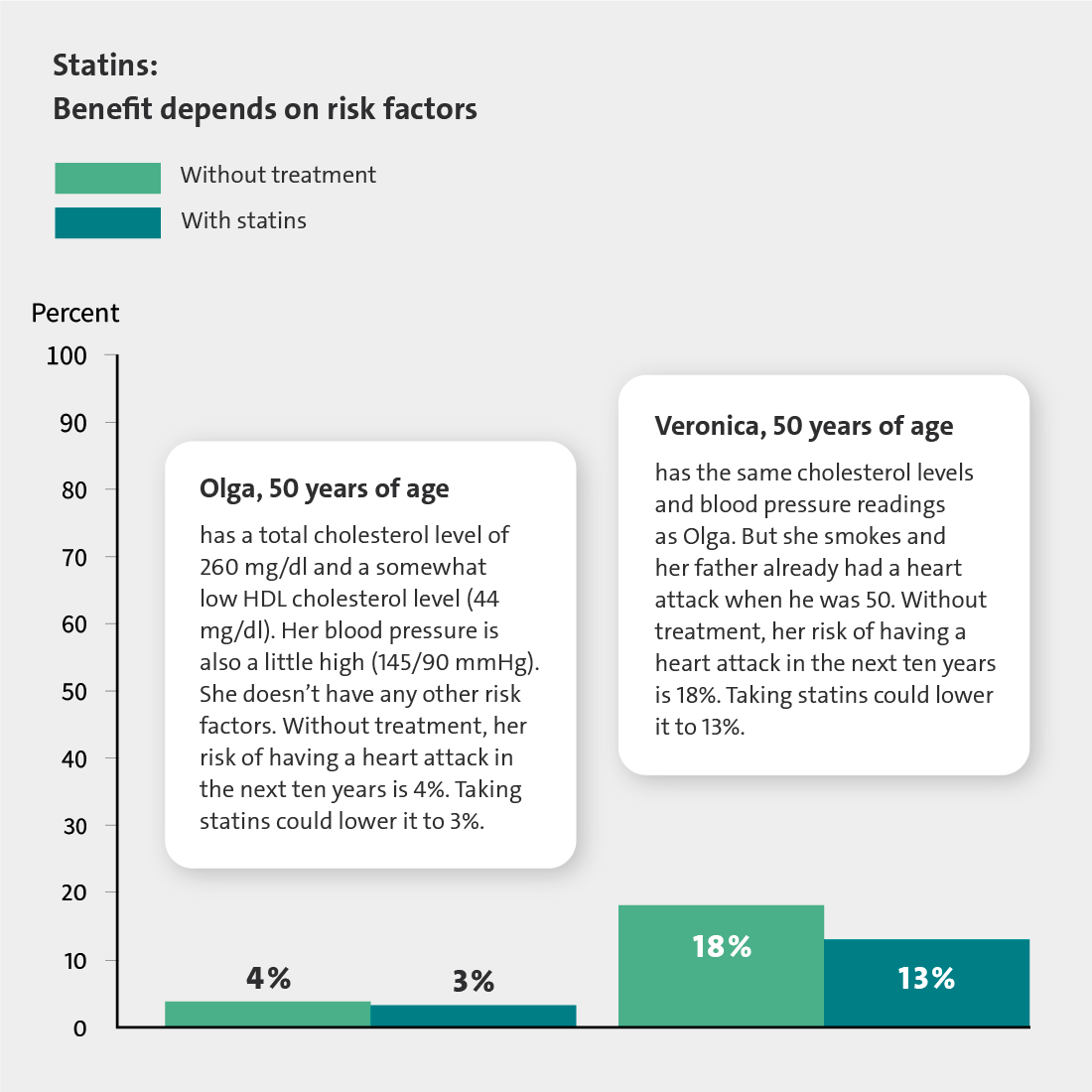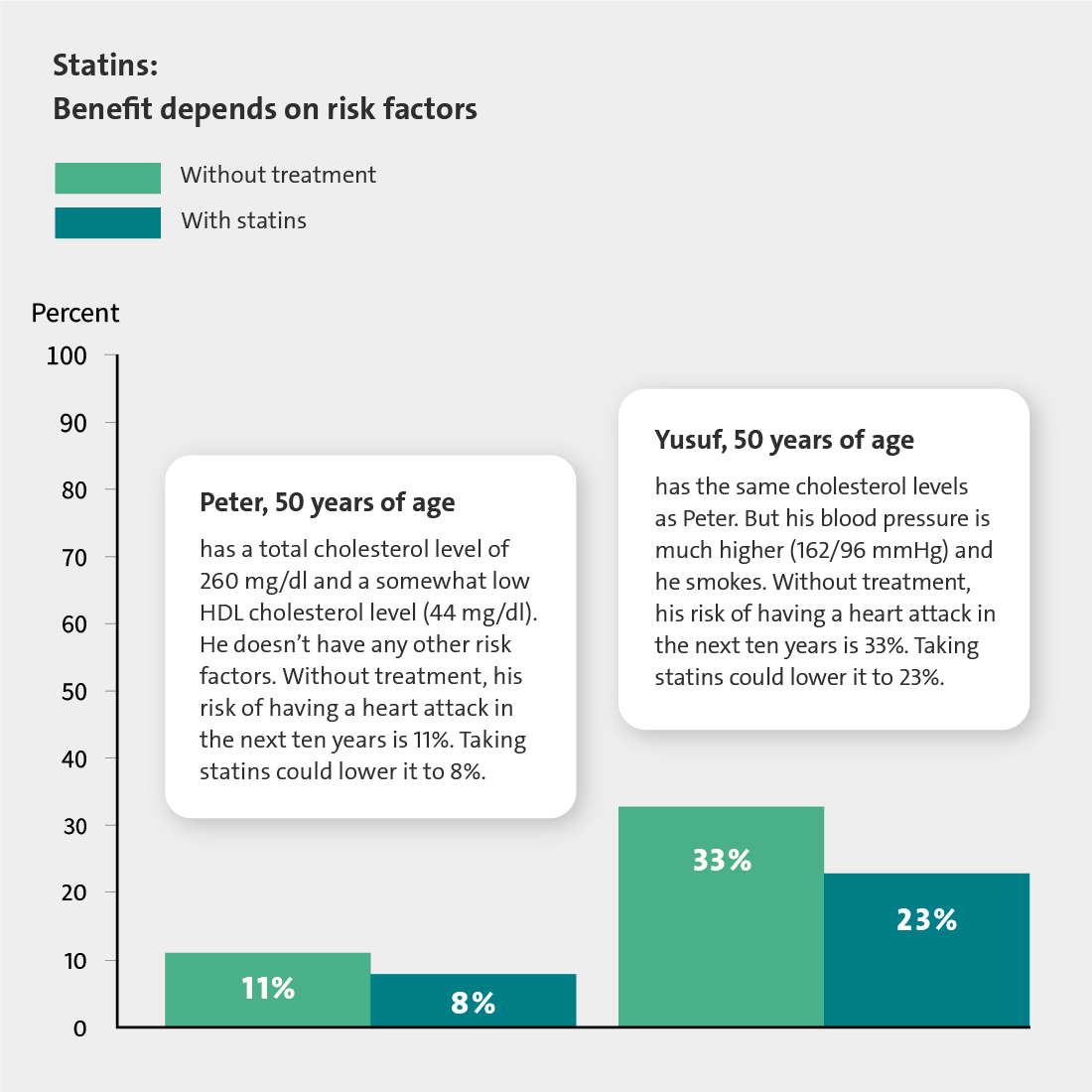Because the risk of serious side effects from statins is very low, experts agree that the advantages of taking them significantly outweigh any disadvantages.
In very rare cases, statins lead to muscle damage. This results in pain, weakness and swelling in the muscles – typically in the shoulders, legs or back. Muscle damage increases the amount of an enzyme called creatine kinase in the blood, so this sign of muscle damage can be detected in a blood test.
In the most severe form of muscle damage (known as rhabdomyolysis), cells of the skeletal muscles break down and enter the bloodstream in large quantities. This releases substances that can damage the kidneys. The possible signs of rhabdomyolysis include painful or rapidly tiring muscles as well as reddish or dark-colored urine. If you notice this, it's important to stop taking the statins and seek medical advice immediately.
In studies, muscle damage occurred in about 1 out of 10,000 people who took statins for more than 1 year. The severe form (rhabdomyolysis) was even rarer. It is more common if high doses are taken.
Some people are worried that the medication will build up in their body if they take it regularly over the long term. But these worries are unfounded: Our bodies continuously break down medications and get rid of them with the help of various mechanisms.
Statins might interact with certain other medications (like the antibiotic clarithromycin) so they shouldn't be taken together. Because of this, it's always important to tell your doctor what medications you are already taking. Anyone who takes statins should also avoid grapefruits because this fruit can prevent the drug from being broken down properly in the liver.



